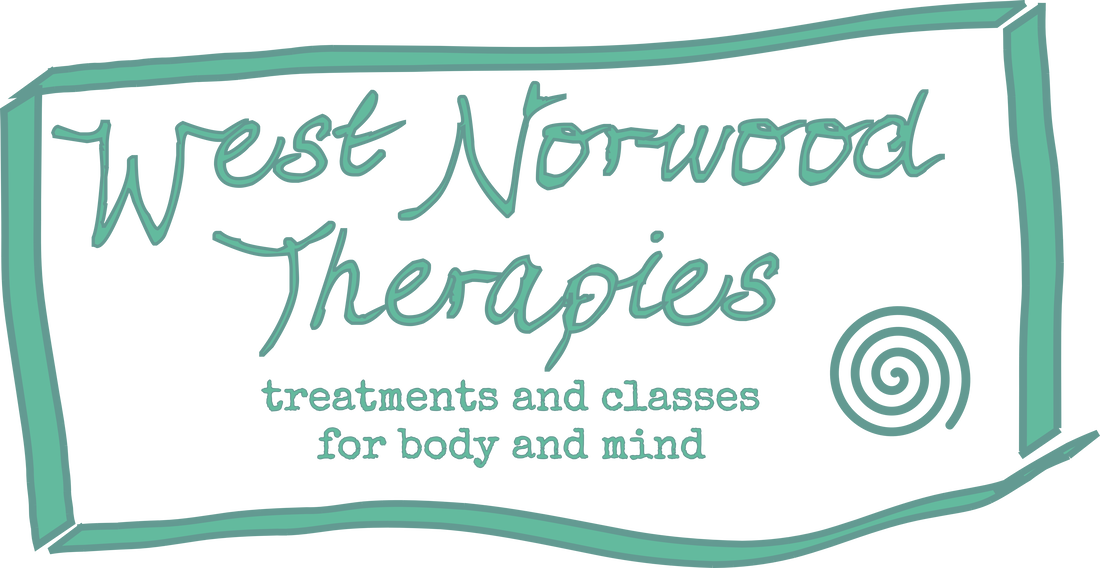|
Massage therapist Erika Zettervall shares an update on her experiment to see if running can help with depression and low motivation. Here she shares how this is going over the depths of winter and the effect it is having on her life. Still running
In my previous blog I had just taken up running regularly as a vehicle for keeping mind and mental state in good health. So here is a little update a few months along deep into mid-winter. I am still running - three times most weeks, for about 40 minutes and really enjoying it. The after-effect of brightness and energy in mind and body, even if the actual run sometimes felt like hard work, is really very nice. It definitely has been harder to get up when it’s dark and out of the door in the mornings during the winter. North is in my blood so temperature is not a deterrent and frosty ground a more pleasant experience than the mudslides our parks often turned into this time of the year and I also quite enjoy getting out in bad weather, better running than walking in the rain. Then afterwards it’s so nice to get back in and indoors feels lovely dry and warm. It’s more the general tiredness of January and winter with its short days, a time when, if possible, it’s okay to linger a little longer in bed and take it a bit slower. This coming week, February 1st, marks the halfway point between winter solstice and spring equinox. This day is also called Imbolc or st Bridgids day. From now on the acceleration in daylight per day is becoming more noticeable week by week. Amusingly, this day has lately gain notoriety due to an increased interest in old Irish and Gaelic traditions, a side effect from the many Brits looking into Irish roots in pursuit of a passport in the wake of Brexit and is now celebrated in several places in London. When it comes to avoiding slipping into depression, one of the purposes of the running regime, it is obviously impossible to know and compare how I would have felt if had not been running regularly. The dread and despair that I often experience around this time of the year, so familiar and recognisable I know it will pass, like a winter season of mind, but sometimes it sticks and turns into depression. This year it feels okay. The structure of running is helpful and having regular dose of joy and satisfaction from keeping up with the commitment is good mood boost but the sense of strength and vitality is the biggest benefit I experienced so far.
0 Comments
Massage therapist Erika Zettervall has embarked upon an experiment: can running help with depression? In this inspiring blog she shares her journey so far and some helpful resources for anyone interested in exploring whether running might be a good option for yourself in improving mental wellbeing. I have taken up running again, this time conducted as a little experiment to see how - or if - it affects my state of mind. Bluntly put, I’d like to see if it works to combat depression. My state of mind has been a bit low and dull, feeling uninspired and finding it hard to make decisions as well as difficulty concentrating. Perhaps that’s normal sign of ageing or symptomatic of my lifestyle with increased screen time and social media indulgence. According to psychiatrist Anders Hanson, running 30-45 minutes 3 times a week at 70% effort for at least 6 weeks would create changes in the brain that help with depression. My understanding is that there is a substance produced in the hippocampus and cerebral cortex in the brain called BDNF (Brain Derived Neurotrophic Factor) that protects, repairs and stimulates new brain cells. Having low levels of this substance is associated with depression. Medication increases these levels as does exercise. I have taken antidepressants in the past and found them helpful to some extent but not really making much difference long term and at this point it doesn’t feel necessary to seek them out. So, after finding a book on my bookshelf in the great unread section by Dr Anders Hansen writing about the benefits exercise in general, and running in particular, has on the brain as well as hearing him speak on Rangan Chatterjee’s podcast, Feel Better Live More, episode 38, I decided to give it a go. A simple explanation for these benefits is that our biology is still more in line with being a hunter gatherer and not suited for the abundant, convenient world we now live in. Shorter sessions of 20-30 minutes would also make improvements in the functions of the brain such as memory and creativity. The plan is to work up to the 45min sessions and keep it up for 6 weeks and see how I feel and then keep going with three times a week 30-45min sessions. It sounds a realistic and doable plan to have and curious to see how this will take me through the winter. No doubt shorter days and harsher weather will be a bit of challenge. Luckily, I have always liked running when I’m fit enough and I enjoy the striding movement. It’s a nice way to explore an area be it park, wood or neighbourhood. It is also a very accessible and simple way to exercise. No need for fancy memberships, class schedules or expensive equipment. Just put shoes on and go. I like the freedom of that. I am now 4 weeks in and it is a joy. Perhaps it’s the lovely, mild autumnal weather that brings a pep to my step. Starting out being in general good health and having a comfortable walking gait has been helpful (don’t run before you can walk as the saying goes) in having making it very pain free so far. Not focusing on speed or distance makes it very carefree. The first two weeks I went for 20-30 min sessions and this last week increased it to 45 min a couple of times.
As to how my mind is: Feeling a lot more inspired than I did a couple of weeks ago, but if that is down to the actual running or to setting and following a plan it’s hard to say. Having an intention with what you do, whatever it is, is also one of these things in life that can shift the mood.
Massage therapist Erika Zettervall explores our senses - the big 5 and some lesser recognised ones that shape our experiences - and suggests some ways of using this to cultivate calm and a richer experience. We have five main senses that we all are likely to be very familiar with and three or four lesser known senses. These are connected to sensory organs. 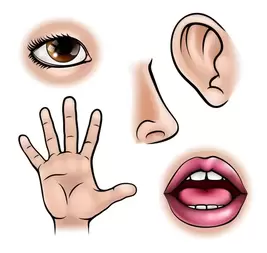 Our main senses: Vision - eyes Touch - skin Hearing - ears Smell - nose Taste- tongue The lesser known senses are perhaps just ones that have not been incorporated into everyday thinking about senses. There are several and it varies depending on how much you break them down into finer systems and functions.
Balance – the vestibular system – tells us whether we’re in equilibrium or not, and whether we’re in motion or not. We have the inner ear to thank for that one. The sense of pain – nociception – is nerve or tissue damage felt in the skin, joints, bones, and internal organs. Proprioception or position Temperature There is also interoception related to how things feel on the inside for example blood pressure, sense of stretch in the bladder Through external sensory input our brains interpret nerve signals and conjure up a picture that gives us all a unique view of the world. Colour adds a dimension to seeing and we all experience colour differently. The artist Cezanne described it as where the brain and the universe meet. Practicing a wider sensory awareness will create a richness in life and is useful to bring calm and presence. A simple way to bring to ground yourself and reduce anxiety is tuning into the five main senses: What can I see: looking around, pick large or small items to focus on, try to notice the colour, texture, and patterns. What can I touch: notice skin whilst taking palm to palm, fabric of clothes, any object you can pick up and touch, putting hand (or body) into water. What do I hear: near, far, from different directions and volume. What can I smell: you can bring things to your nose but also notice if and what you can pick up from the air. What do I taste: if you don’t have anything at hand think about distinct flavours as you remember them like lemon, coffee, something sweet, Noticing and observing the sensations from the surroundings brings you into the space and present to the moment. It also orientates you into the now, geographically and in time. In addition it will also subtly enrich and broaden any experience. With anxiety we are away worrying about what may or may not happen, sometimes completely fictional but the fear appears real. Becoming present in the moment this way aids the distinction between factual and fictional fears. For example; good to hear a car approaching whilst out walking rather than being away in the mind somewhere else, worrying about things that might or might not happen. Since we have a focus on water and swimming with our blogs from West Norwood Therapies this summer, a suggestion from me is to bring your senses into interactions with water. Apart from taste for obvious reasons. When immersing into water notice the sensations on the skin, sense the texture, temperature and scent. The sea water is very different to a lake or pool in texture, scent and colour. Listen for the sounds both being in, under and around water. If you are by the coast, gaze out at the offing, where the sky meets the ocean. Pay attention to the sounds sounds and smells and you can have an awe-inducing full body/mind experience. Observe water move - be it waves of the sea, swirling brook, big water fall or rain is mesmerising and meditative, adding the sound and smell of it the experience swells. Stepping out just after rain, scenting the petrichor brings calm and joy. Bring your senses to your summer water adventures and see if it will increase experience of awe and joy. Our thoughtful massage therapist Erika Zettervall considers our impact on the planet through our life choices and whether an awareness and gratitude for the intricacies we take for granted can help us to tread a little lighter and perhaps learn to leave less trace. The festive season is upon us as the year of 2021 is rapidly drawing to an end. Again a new covid variant threatens to upset and thwart carefully made plans of festivities. Remembering last years sudden disruption to celebrations and disappointments is perhaps not what we had in mind gearing up to Christmas. But being prompted to look back into the year we have just had is good in order to see where time has gone. Revisiting good moments reinforces the feelings of joy/wonder/love in life and fills our source of strength. Equally, acknowledging difficulties and hardship and persevering in this crazy unpredictable thing called life develops this source of strength. Reflection can also help in seeing what direction we are traveling and becomes an opportunity to adjust direction. We need moments to rejoice, to experience abundance and generosity. Connect, congregate and break bread together. Nurturing our seeds of happiness. The true spirit of Christmas contains all that. The trouble is we easily slip into excess, stressing out and inadvertently creating the opposite. Too much of a good thing becomes a bad thing. Reflecting on questions such as ‘where does it all come from?’ and ‘where does it all go?’ might bring connection to our impact on our planet and maybe bring more of a sense of being part of our environment. It might also be a bit uncomfortable. This year we have become reminded what complex logistical network we live in and how fragile the chains of distributions are. The mind boggles thinking of all the parts that comes together in order to create a simple plate of food. From pretty straight forward seeds that have been watered, nurtured into a plant and then harvested, to animals that have had their food grown and harvested to be feed them then their life taken and turned into cuts. The tools and cutlery we use was made somewhere by someone and ended up in our kitchen. Resources we use for cooking, cleverly arranged so we only switch on the hob. The person who shopped and cooked the food. You quickly create endless complex webs and chains of all that came together to create one meal. It is quite remarkable what we are capable of and how interconnected we are. Before digging in to your plate of food, pause and give thought and thanks and gratitude towards all that had to come together for the meal to manifest. Some say grace before a meal and thank God. I was brought up in an atheist environment and particularly my father thought it ludicrous to thank God as it was his hard work that paid for the food. My mother who did the cooking and shopping probably wanted to be thanked for that. I think they missed the point. Saying grace is a way of thanking all that came together for the meal to be there, regardless of belief in God or not. Pausing and express gratitude before feasting heightens the sense of wonder and respect. Where does it go? What do we leave behind? Definitely less pleasant to think about but non the less necessary - the food becomes energy for our bodies and waste. The waste bit we generally don’t like to give that much thought to: go to the loo, flush, gone. But where does it go? (We have been reminded this year that more often then we like to think it gets dumped in our rivers). We have our rubbish collected as a part of our council tax payments so we pay to not have to worry about it and - when it works - it’s very efficient and convenient. Currently there is an exhibition at the Design Museum in London titled Waste Age. It’s focus is on solutions. I have not yet seen it but read about it in this article. It sounds optimistic and interesting. Generally, I despair about the state of waste in the world and particularly attitude to littering in this country. (The writer and comedian David Sedaris explored this topic years ago and I will refrain from going into a rant, but it is very noticeable when returning here from abroad.) I believe there is a natural desire in us to make a mark or leave a trace that we have existed. Cave paintings contain handprints likened to a signature. Carvings in stones and tree trunks leave a mark of our presence to posterity as graffiti paintings do. Monuments and graves are, to some extent, also markings that we have been here. Perhaps we fear being forgotten, that our life’s were insignificant and unremarkable and that feeling drives a need to mark our existence and create a memorial. But I doubt anybody likes the notion that we will be known in history as the era of waste so this flame of desire might not need more encouragement and instead some temperance. I thought of wild camping. Not so much as a venture but the ethos of it. Leave no trace. You set up your camp discreetly, bring all you need with you and leave nothing behind. If you need a poo you carefully select a spot to not contaminate water, dig a hole and cover it. You don’t scare the ground with fires but take your stove and fuel with you. Visiting a place without engraving your presence on it. “If you see the suffering in the world but you haven’t changed your way of living yet, it means the awakening isn’t strong enough” – Thich Nhat Hanh When we live many together as we do, almost everywhere in the world we have found support for our existence by providing infrastructure for amenities. But we may have lost the connection to the impact this has on our Earth. By considering how interwoven we are and what impact we have we might be led to tread more lightly while still celebrating life and so begin to change the course from becoming the age of waste. Some ideas for Christmas stocking fillers: litter-picker, ticket to Design Museum, Thich Nhat Hahn book Zen and the Art of Saving the Planet.
Massage therapist Erika Zettervall explores what a good night's sleep can do for us and how this can be a challenge for many. In this interesting blog she share some helpful techniques for preparing and helping yourself get a quality night's sleep A great part of our lifetime is spend sleeping - almost 1/3 provided we get 7-8 hours of it per night. We all know how good sleep is essential for maintaining health and good mood. Sleep plays crucial role in maintaining the nervous system in general and the brain in particular. This week leading up to the vernal equinox marks “World sleep day” highlighting the importance of good sleep. Plenty advice will be published and many top tips for our sweet dreams. Unfortunately, it’s not just what we know or how to do something that makes the difference but what we do with it. Implementing good routines and breaking habits might require a bit of effort but well worth it if the result is sweet sleep. Recently I was chatting with one of my neighbours when mentioning I sleep really well, she made the comment “ability to sleep is like a super power”. That’s crazy, that it would be so unattainable, but my guess it’s like that for many and not being able to switch to sleep is torturous. Yet all that is required is to lay down close your eyes, relax and drift off into sweet slumber. Falling asleep is remembering a sweet safe place and let go. I have not always had this ease with sleep and have experienced periods of insomnia and disturbing dreaming. Sleep is an elixir for our health and must be important otherwise we might have evolved out of it as it is a quite a vulnerable state. That could explain the division between night owls and early birds. Somebody need to be awake to keep watch. In English we say fall asleep, implying a letting go. We also use the term dropping off, when going to sleep, indicating a motion of fall and that is often how it feels in the mind. Relinquishing control, we trust we will wake up again (on time), that we can safely drop into the unknown, where the subconscious can and will make itself heard and seen in the form of dreams. I find dreaming fascinating, it can help you understand yourself. Dreams can also be very intense, loud, vivid, frightening and disruptive. To ease and begin to understand deeper parts of myself I was encouraged to practice directing the dreams. When becoming aware of dreaming without actually waking up, called lucid dreaming, see if the scene could be changed. I was also encouraged to go back to dreams when waking up. Just dropping back into the dream and create a different outcome, softening and calming the mind and reducing nightmares. Create bedtime routines of preparing for sleep a bit like a plane coming into landing. Slow down and take care of the physical space and body. Set an alarm or reminder an hour or so before bed time to prompt preparing for bed and what needs to be in place for the following day, so that you can actually go to bed when you had intended to be in bed. Allow for some time to settle into bed before lights out. Regulate the intake of stimulants such as food (big meal near bedtime and type of food such spice and garlic), drinks (alcohol, coffee) and visual stimulus such as movie/television/or social media. Read in black and white or give the eyes a rest or listen to an audio book. Treat your bed and bedroom with respect and as the place for rest. Simple things such as making your bed every day and caring for sheets and bedding. Crisp clean sheet is a simple luxury and gesture to the importance of sleep. Invest in good quality and look after it, you spend a many hours in bed after all. Keeping a set bedtime but also keeping a wake up time, some say this is more important than regular bedtime to cultivate good regular sleep. Sleeping in, is not great for establishing healthy sleep or for making up lost hours of sleep. We humans like a rhythm and respond well to it. Soften sensory input from sound and light. Some sounds are hard to regulate when living in a crowded city where people’s life goes on in close proximity. Softening can be achieved in form of textiles, insulation and white noise, like a fan. When we think of light Black out curtains might be good, but if there is a small gap the light gets focused cutting though like laser beam through the room, so softening by a fabric or shutter that create shaded light. For the content baby or pet or human for that matter this does not matter they have the ability to just switch off and fall sleep. Not disturbed by noise or light. To switch off we need to relax and that takes practice. Perhaps it shouldn’t be that way. Tiredness and lack of sleep is very common and instead of rest we often end up with a false relaxation, getting stuck watching television or searching the internet, still feeding sensory input through our eyes and stimulating the brain. If the mind is playing tricks and it’s hard to relax try to soothe it. Breathing equally 6s in 6s out coming into an optimal rhythm for heart and brain. To this add colour going though the alphabet backwards. Colour almost rainbow but going red, orange, yellow, green, sky blue, dark blue, violet, purple, black night sky with stars and then clear light. Big letters tuning small. Big red A turning small, big orange B turning small and so on. For best quality of sleep you need to breath through your nose. Snoring is not just disrupting to your bedroom companion is also disruptive to the snorer. The struggle to get oxygen into the system will wake you repeatedly. There is a simple solution to this. Just put a latch on your mouth encouraging the nasal solution when looking for air. The latch - small piece of tape. I thought it absolutely mad when I first heard of it, but a month later I am kind of hooked. I do waking up a lot clearer in mind than I used to, no brain fog and no trips to the loo in the night. Happy sleeping zzzzzzzzzzzzzzz Massage therapist Erika Zettervall shares her joyful and varied experiences of walking her dog Alfons in the winter and explores the benefits of getting out and about with or without a furry friend. This month is national walk the dog month, supposedly due to the bad January weather dog owners are in need of encouragement to walk their dogs(!?). I find this a bit baffling since my experience of weather in winter is that it’s more dog walking friendly than summer weather. The heat is worse than sleet if you are a dog. There is, of course, the maddening amount of mud at the moment, resulting in muddy paws and boots to clean, but walking my dog has never been a chore, rather a great source of joy. It was the main reason for getting a dog and I take great pleasure in walking, I enjoy long country walks as well as exploring urban environment. With this winter lockdown, dog or no dog, walking will be an opportunity to meet and spend some time with friends. Don’t let the temperature put you off and prevent safe socialising and friendly support but sitting on a park bench is chilly and is not great for the kidneys. Instead, keep on moving, the walking will build your inner heat and you will keep warm. Walking and talking is very therapeutic, the gentle movement brings softness and flow to thoughts and conversation. It lends itself to a deeper conversation and is often preferable to facing each other stationary when touching on sensitive topics or resolving a delicate issue. However with a dog or two put in the mix the focus will shift suddenly and abruptly, when urgent canine matters occur. Like balls needing to be thrown or to stop for a close inspection of a wall that may require a signature in the form of quick cock of the leg! It can be a good interlude at best or a bit jarring if you are mid-sentence. I used to find it a bit annoying before becoming a dog owner myself. But the patience required, something I have had to cultivate with my dog, makes me slow down and notice my surroundings a bit more. This disrupting and also playful quality of dogs is great if you are like me a bit prone to drift and disappear in thought. My dog, Alfons, keeps me firmly in the present by his demand for attention and in so doing prevents me from rumination and overthinking the many anxieties of the world and him from fox poo rolling or munching on unsuitable discarded food bits. I can understand the hesitation to venture out for a walk when there is no dog insisting on an excursion, especially when the weather looks a bit wintery. Unless of course you are like me and love crisp cold weather, find a long brisk walk energising and crave that sweet feeling of returning home with legs tired and cheeks rosy. Then the enjoyment of staying cosy indoor is delightful, but without the exertion and fresh air you can end up foggy headed and sluggish. London has many fantastic parks, big and small, as well as the commons. Many streets have beautiful trees and small patches of greenery and its apparent numerous Londoners are keen gardeners making pavement walking very interesting and pleasant. Most places are very accommodating and friendly towards dogs, then there are also the waterways to get to know; rivers and canals with paths running alongside. Lately I have exploring areas along the river Lea and East London and they are absolutely great. You can walk for miles on paths and marshes with very friendly crowds. Even cyclists are friendly! If you not keen on roving and since we are all encouraged to stay close to home this winter, much discovery can be had repeating a favourite route. If you carry the mindset ‘you never cross the same river twice’ you can begin to cultivate awareness in the small changes in every day. On a clear winters day the views are good and very different to the summer. With very little or no foliage you can see though the trees and what in the summer is obscured by leaves is now visible. You might also notice the naked branches’ beautiful structure, maybe there is a hint of preparation for new growth, stems tuning purple and swelling buds signalling a turning towards a new season. If you still don’t fancy winter wandering and are dog free, take pleasure that you don’t have to take the dog out in the cold and be grateful you can choose. Then you cultivate a bit of gratitude! Although the wise part of you is hopefully aware a daily walk is would be a great benefit for maintaining good health and supporting your immune system. Put a hat and gloves on, step out and enjoy winter walking, with or without a dog. Massage therapist Erika Zettervall thoughtfully considers the importance of engaging with the physical darkness that surrounds us at this time of year as the days get shorter and encourages us to balance how we value light with dark. Darkness. It’s that time of the year again. The daylight hours are reduced day by day until we reach the winter solstice at that point the day hardly begins before it starts to get dark again.
Seasonal darkness during our winter is inevitable. Our planet will travel continuously, journeying through the universe orbiting the sun with its axis tilting the way it does, whether we like it or not. In a world of uncertainty that is pretty certain. These short winter days can of course be avoided by relocating to the other side of the planet for the winter or permanently move closer to the equator where there the daylight hours do not alter in the same way over the year. The longing for winter sun and light is a strong incentive for travel this time of the year seeking out longer, brighter days. I have been able to do so past but not for while, and this year that option is more unattainable than usual. But I often work in the evenings and have the benefit of time to be outdoors during the day. With the wisdom of seasonal light/darkness being something that cannot be altered and, in accepting that, perhaps it’s possible to explore a different relationship to darkness. I recently heard somebody on the radio being interviewed talking about the scarcity of darkness. The increased popularity of illumination of not only buildings but also trees and gardens, the dark night sky is being endangered. He related to darkness as visual silence and something to treasure. True, we do relax better in darkness - putting an eye bag over your eyes in savasana deepens the relaxation. Our eyes are our most dominant sense and there is strong focus on visual stimuli in our society. But in the dark we need to slow down and rely on other senses. Feeling, listening to find the way, elevating our presence of mind. Slowing down and easing into the darkness, eyes adjust and sight is expanded so shades appear. One of my favourite things this time of the year pre covid was walking through St. James’ Park early evening in the dark. Stepping into the peace, silence and darkness of the park contrasting with the busy West End streets sparkling with Christmas lights and bustling with shoppers. Letting the eyes adjust to the dark, enjoying the quiet calm and heading for Victoria station with my small dog in tow. Happy to see fellow commuters and a few tourists braving the dark. We need the darkness as a contrast to the lights. Like stars in the sky only visible in the dark and that is the most beautiful sight to have. Milky Way or, as we call it in my language, Vintergatan Winter Street like the way you travel this time of year since in the summer the sky’s lightness obscures the stars. In accepting the scarcity of light and immersing in the darkness, there is room to discover its own particular beauty. Begin by exploring the edges getting up before sunrise (not too early in November), light a candle and let the light come slowly. Go out before sunrise or at sunset experience the shifts. Let the eyes adjust. There is also the other darkness. The internal darkness. That also needs befriending and that will be topic for another blog. |
AuthorBlogs from the WNT team. For our blogs from before June 2020 please see individual profile pages - it's a good way to get to know practitioners too. Archives
June 2024
Categories
All
|
|
Visit us - by appointment only please - in the office block in the Access Self Storage premises at 443 Norwood Road, London, SE27 9DQ
[email protected] Phone - please contact practitioners directly, or if not in a rush you can leave a message for us to call you back at 07931876931. |
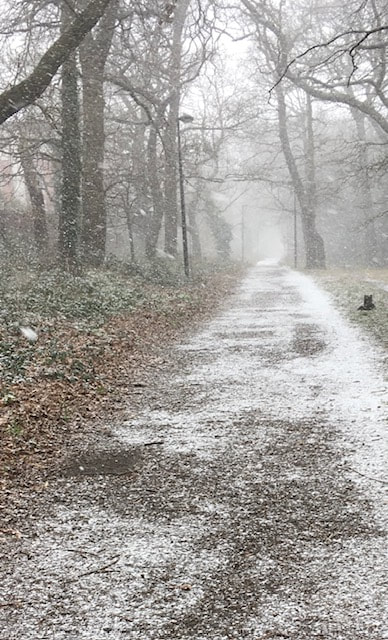
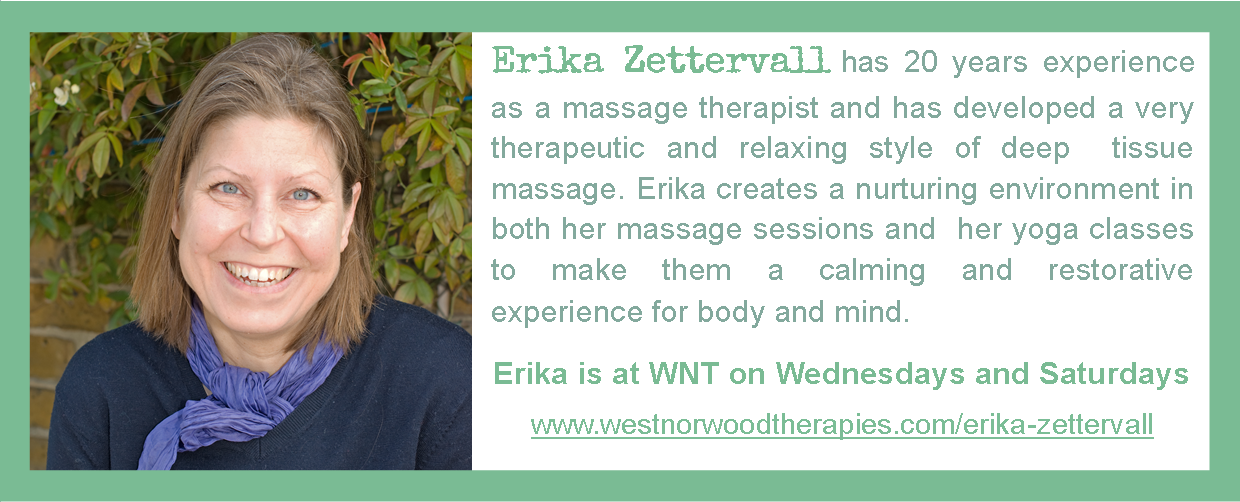
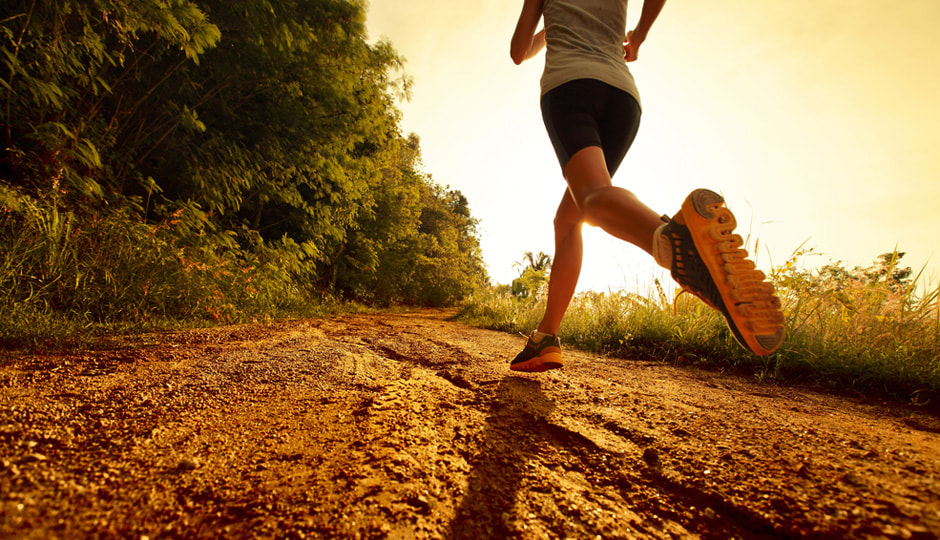
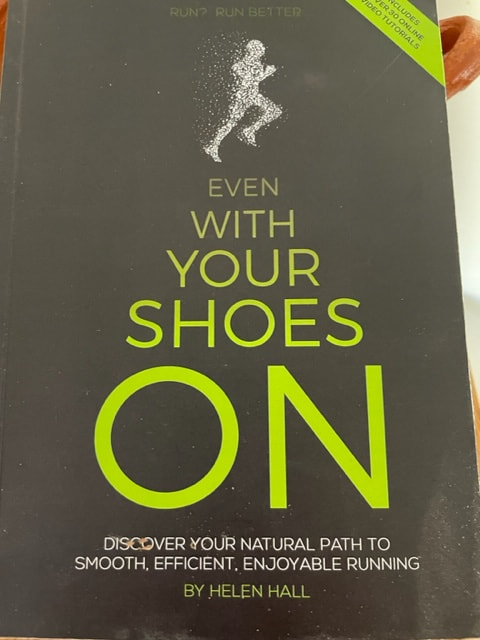
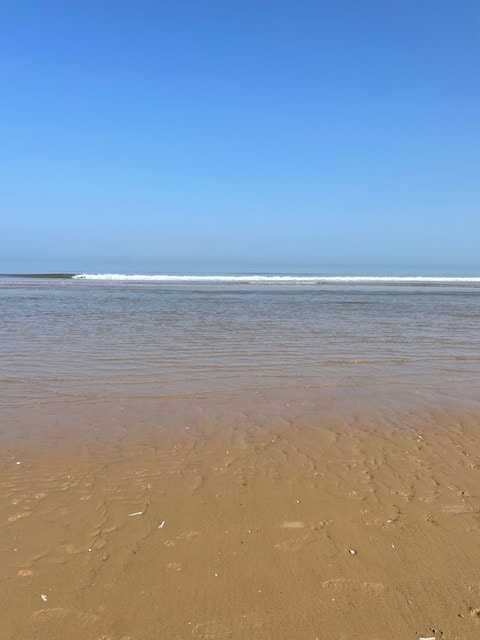
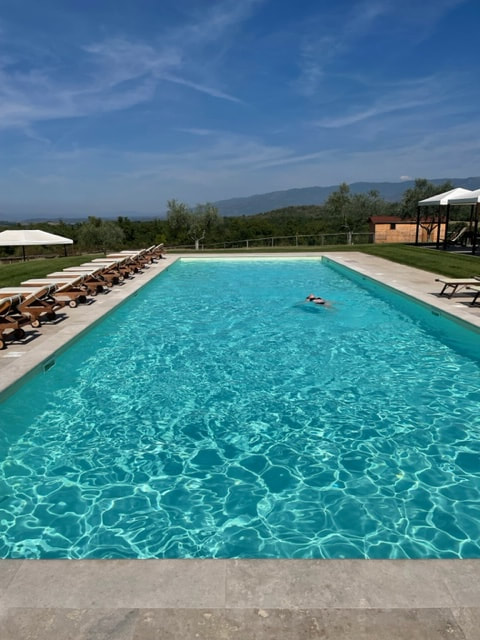
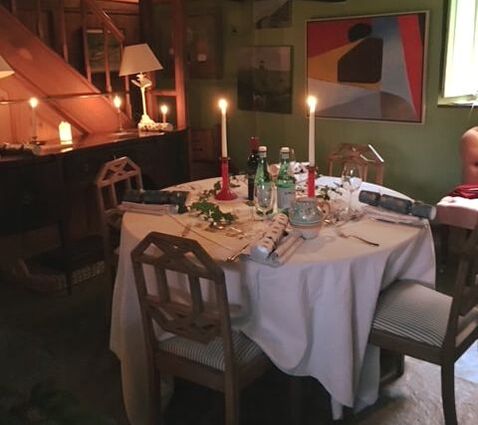
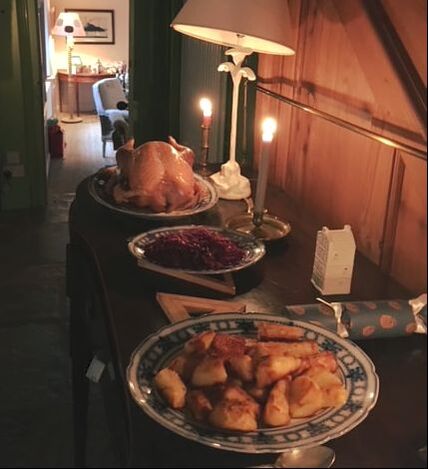
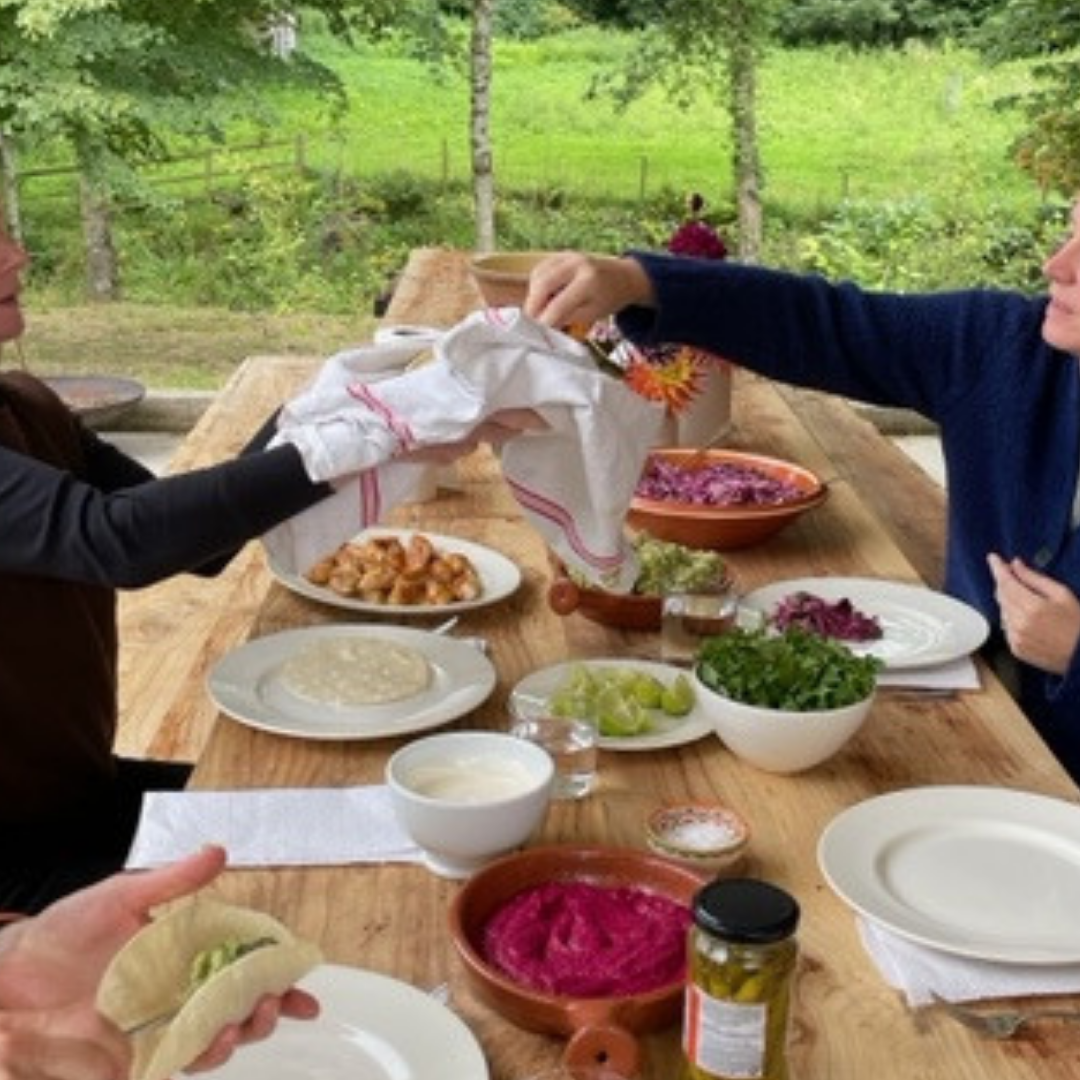
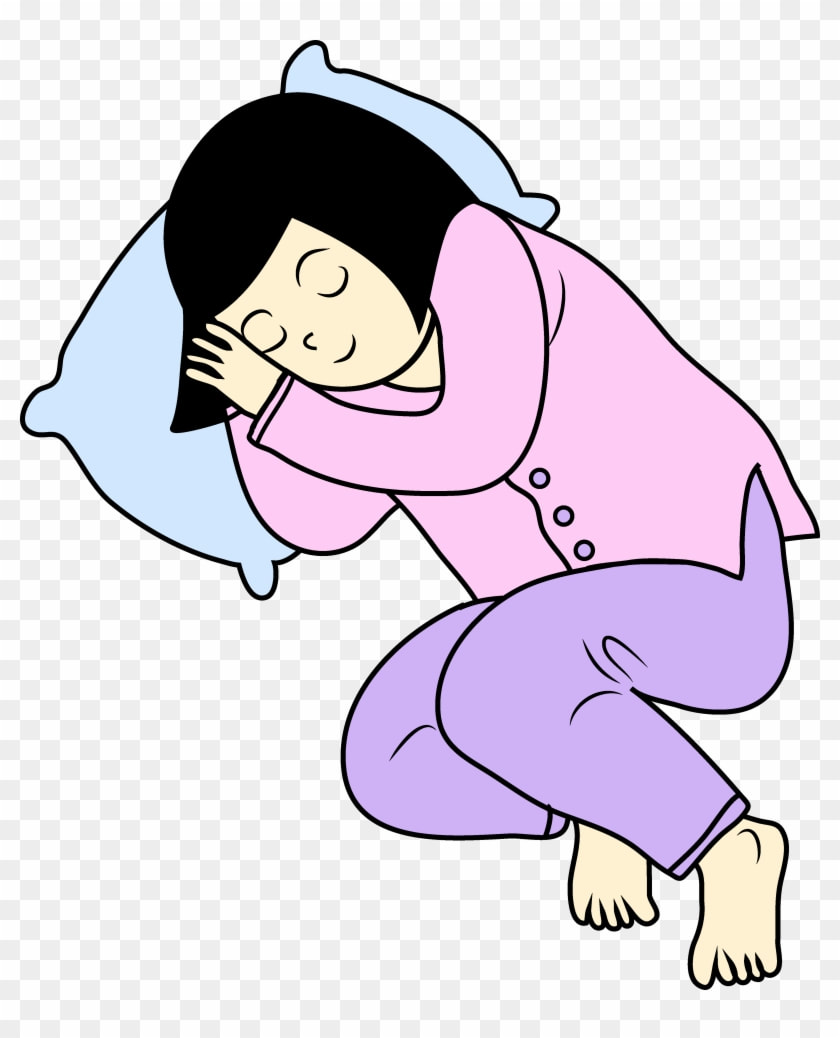
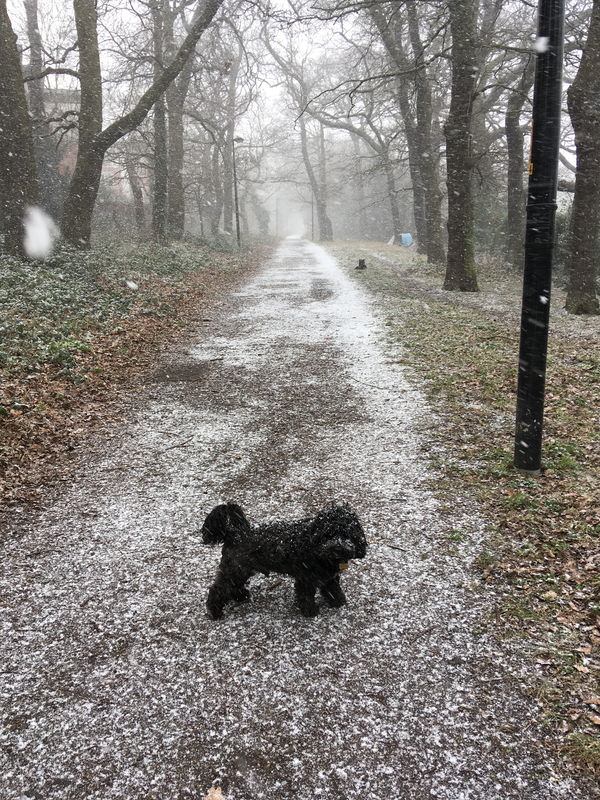
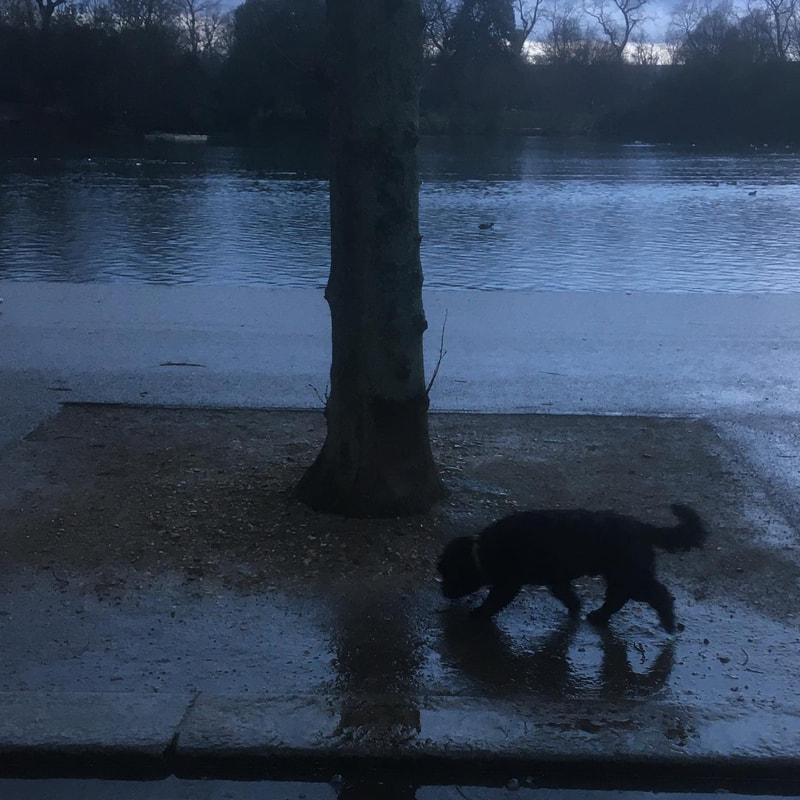
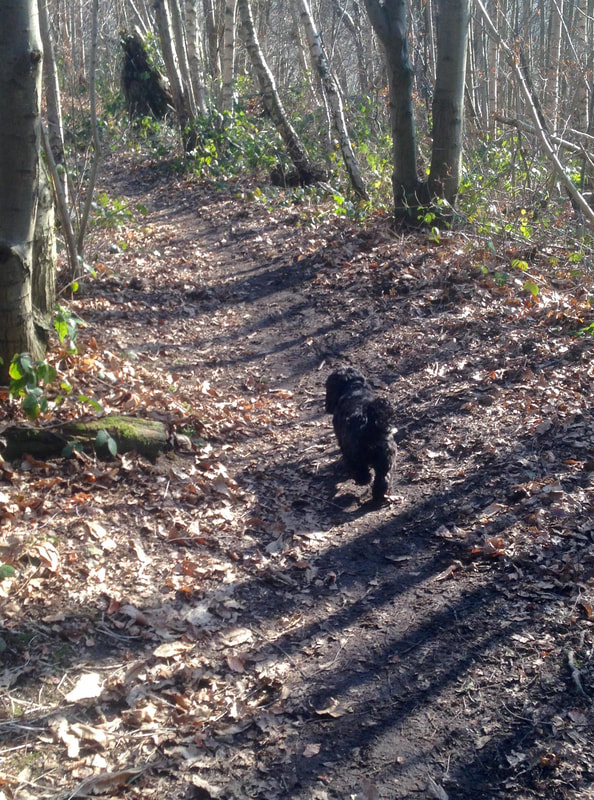
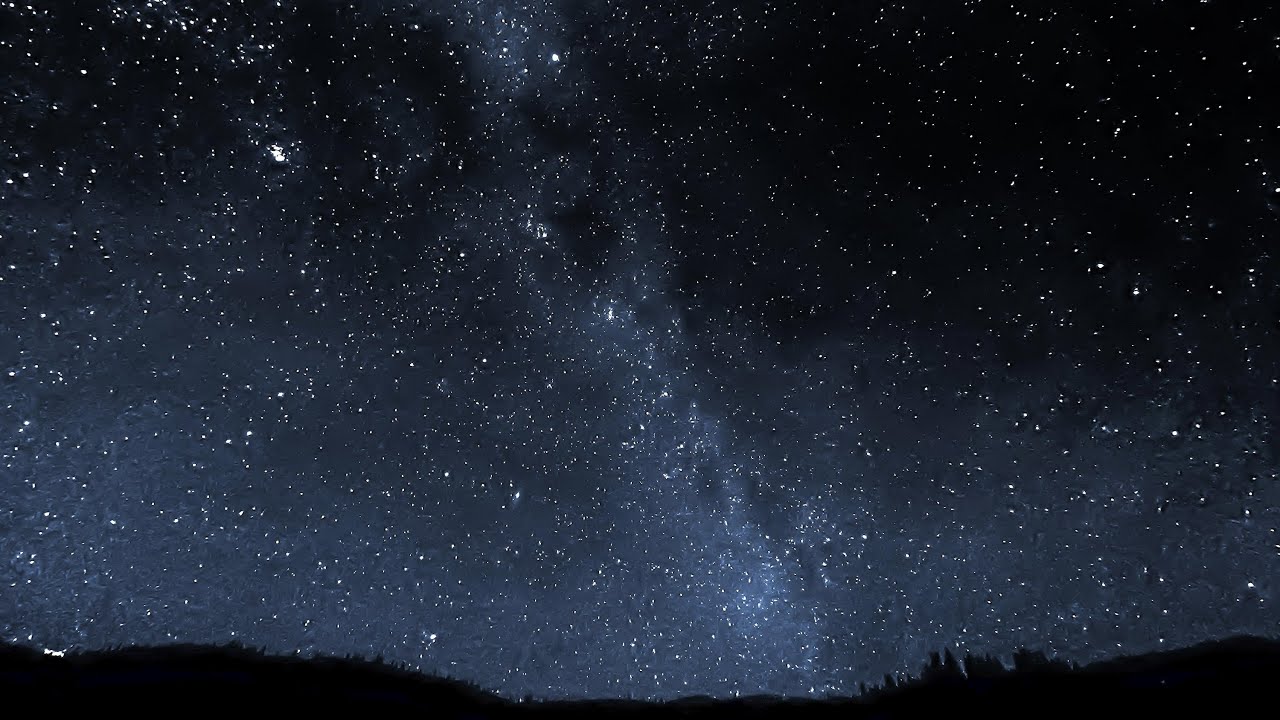
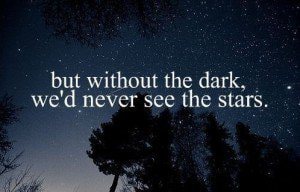
 RSS Feed
RSS Feed
